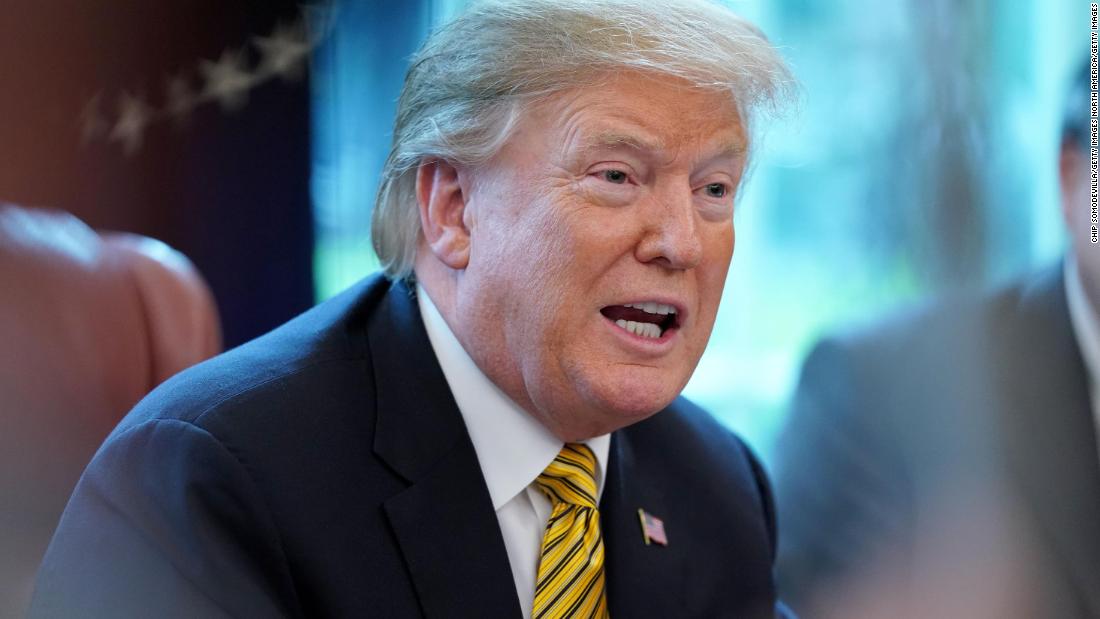
On Monday, Trump tweeted: "There is no reason for the U.S. Consumer to pay the Tariffs," and that they can be "completely avoided if you buy from a non-Tariffed Country, or you buy the product inside the USA (the best idea). That's Zero Tariffs."
Facts first: Most of the Chinese products subject to tariffs simply aren't made in the US, including apparel and electronic components. For those few items where there is an American made alternative, there is also the problem of scalability: US companies simply lack the capacity to create the number of products that come from China. In that regard, Trump's suggestion that there is "no reason for the U.S. Consumer to pay the Tariffs" is false.
"That's misguided," said Greg Daco, chief US economist at Oxford Economics, on Monday of Trump's notion that US companies can produce the same products at the same scale as China. "The type of imports that we bring in from China and the scale of the imports ... make substitution, at least immediate substitution, nearly impossible."
Part of the problem is that the US no longer has the manufacturing base it once did. According to Robert E. Scott, senior economist at the Economic Policy Institute, over the past two decades, the US has lost roughly a third of its manufacturing capacity, as more than 90,000 factories have closed and 5 million manufacturing jobs have been lost.
"Entire industries no longer exist in this country," said Scott. "So it's false to suggest we can just buy American instead of paying tariffs."
Daco pointed to apparel, semiconductors, and electronics including laptops and cellphones as prime examples of products whose production could not easily be shifted to the US.
"To replace those imports you would need to build factories," Daco said, noting that companies would also have to hire US workers who are paid at a much higher rate than their Chinese counterparts -- all of which would significantly increase production cost for US companies.
"It would take at least a couple of years (and) would not be profitable," said Daco.
Over the weekend, the Trump administration put a 25% tariff on 6,000 items imported from China, totaling $200 billion in value. On Monday afternoon, the Office of the US Trade Representative announced it was starting the process of extending the 25% tariff onto the remaining $300 billion of Chinese imports into the US.
"The thought that you can simply replace all your foreign sourcing of all these things, even assuming you could move factories overnight, is utterly ridiculous," Rufus Yerxa, president of the National Foreign Trade Council told CNN. Yerxa also noted that US employment is near full capacity, and so the US wouldn't have the labor-force necessary for the production of these goods, even if the infrastructure existed.
When it comes to clothing, textiles and other low-value added products, Yerxa said, "Those are jobs that always throughout history have migrated to relatively less-developed, more labor-intensive regions." He noted too that the US no longer has the infrastructure to produce many of those products.
David French, the senior vice president of government relations at the National Retail Federation, told CNN that the main reasons many of these items are produced in China is that "China has the capacity, logistics and labor force." Other countries, French noted, are not as well suited for many of these products as China is, due in large part for the deep-water ports and existing infrastructure China has built. "It will take a long time to replace the capacity China has," French said.
While some US companies are "working to bring their supply chains back the United States," French notes, "by and large, there are less costly places to produce." Many countries that the US could look to for these products are not as efficient as China, so the cost for these goods would still increase, according to French.
And while Trump's advice for avoiding tariffs seemed largely aimed at consumers, US companies are also stuck paying higher prices for imports.
Among the industries most exposed to the President's trade war with China is the US chemical sector. There, the impact is two-fold -- not only are chemical companies stuck paying tariffs on many specialty chemicals imported from China, since no American-made alternatives exist, they have also been hit by China's retaliatory tariffs, limiting their access to what has been a lucrative export market.
Many raw materials integral to the US chemical industry now fall under Trump's tariffs and are "unavailable outside of China," according to Jennifer Abril, president of the Society of Chemical Manufacturers & Affiliates.
According to an October report by the industry trade group American Chemistry Council, China's retaliatory tariffs on $11 billion in US chemicals and plastics exports "put nearly 55,000 American jobs and $18 billion in domestic activity at risk." Of the roughly 5,200 US products subjected to retaliatory tariffs from China last year, 987 are chemicals that in 2017 accounted for more than $8 billion in US exports to China.
With China set to increase tariffs on a range of US products to 25% starting in June, Ed Brzytwa, director of international trade at the American Chemistry Council, worries that US companies will no longer be able to offer their products at competitive prices into the Chinese market. "A 25% tariff could effectively shut US chemical companies out of the Chinese market," said Brzytwa.
No comments:
Post a Comment